BACS Top Tips for Tacky Mats
BASICS
- Tacky mats consist of a top protective film, 30 or 60 sticky sheets, and a double-sided adhesive bottom layer.
- Each adhesive sheet has a numbered tab at the corner. The tabs ensure only one layer is removed at a time and indicate how many layers remain on the mat.
- Tacky mats are designed to capture particles from foot traffic and equipment wheels, providing an effective and convenient dirt removal method.
- Tacky mats are available which contain anti-microbial preservatives that inhibit the growth of bacteria, viruses, and mould.
- Different adhesive levels provide a mat for every application. Tackier mats are used in heavily contaminated areas such as construction sites. Standard adhesive mats are ideal for normal use.
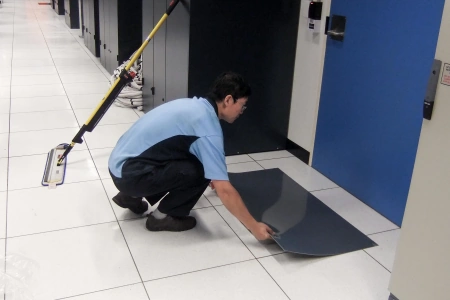 Fig 1: Tacky mat reduces foot traffic contamination
Fig 1: Tacky mat reduces foot traffic contamination
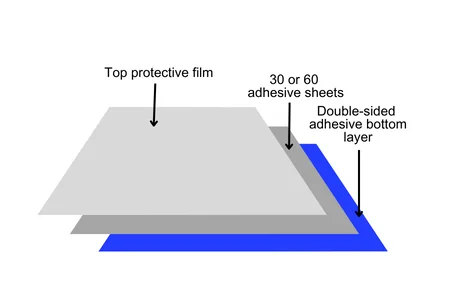 Fig 2: Tacky mat schematic
Fig 2: Tacky mat schematic
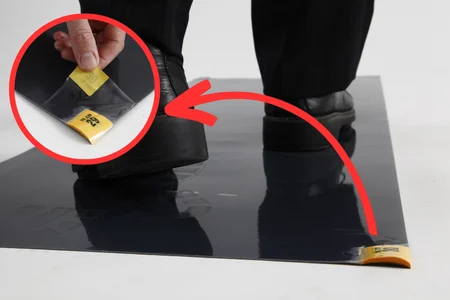 Fig 3: Tacky mat numbered tabs
Fig 3: Tacky mat numbered tabs
STORAGE
- Always store mats flat. When mats are not stored flat, they can buckle and warp over time, creating a trip hazard.
- Keep mats in a cool and dry area. Heat and moisture may cause mats to curl.
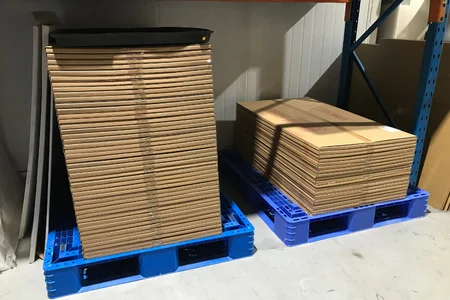 Fig 4: Store tacky mats flat.
Fig 4: Store tacky mats flat.
PLACEMENT
- Prepare the floor by vacuuming to remove dirt and dust, then wiping with detergent or isopropyl alcohol to remove residue. Allow the floor to completely dry before laying the mat.
- Place a mat at each entrance to your controlled environment. Mats should also be placed near construction work or other dust-generating maintenance activities to stop the spread of particles.
- Position the mat strategically to capture all traffic entering the room, at least 2 steps or one complete revolution of equipment or trolley wheels.
- If a door opens across the mat, ensure there is enough clearance so the door does not snag on the mat.
- Orient the mat so that the tabs face upwards and are closest to the cleanest area. When a tab is pulled to remove a dirty sheet, particles will be directed away from the clean zone.
- Mount the mat on a frame if the floor is not suitable for adhesive or if the mat needs to be moved.
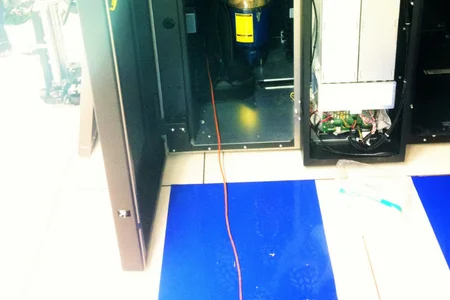 Fig 5: Tacky mat at pod entrance
Fig 5: Tacky mat at pod entrance
MAINTENANCE
- Check the mat often and remove the dirty top layer regularly. Do not wait until the sheet has lost all its tack. Peel off the used sheet as soon as you see loose dust or particles.
- Grasp the numbered tab to slowly peel up the edges of the used sheet. Gather the edges into the centre, forming a pouch to trap particles.
- When removing used layers, study the particle distribution to determine whether the mat is in the best position to capture the maximum amount of contamination. Make any adjustments when installing a fresh mat.
- Avoid mopping around the mat. Exposure to water may cause the mat to curl and become a trip hazard.
- View this video instruction on how to change a tacky mat.
DOCUMENTATION
- Document in your Standard Operating Procedures, the frequency, and person responsible for checking mats and changing layers. Also cover where mats are stored and how to replace them.
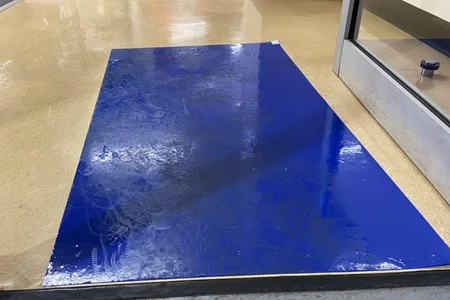 Fig 6: Tacky with dirty sheet
Fig 6: Tacky with dirty sheet